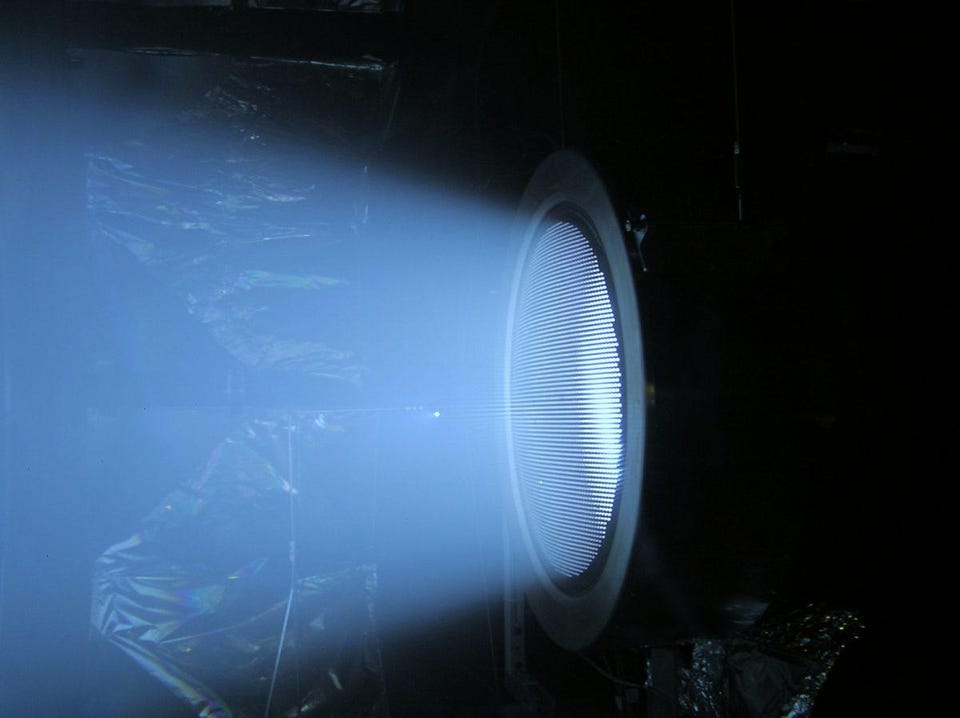Not rocket science: SpinLaunch hurls payloads into orbit

- Rockets are so big because they require enormous amounts of fuel.
- SpinLaunch’s method does away with much of that fuel by hurling payloads into space using a giant centrifuge.
- The machine generates wicked g-forces: around 10,000 times the force of gravity, enough to tear the skin and muscle off a human being.
For the last 70 years, we have been punching our way into space. Using massive rockets the size of skyscrapers, we have relied on high explosives to blast our way out of Earth’s gravity well. While riding into space on a pillar of flame is certainly an impressive way to reach orbit, it is incredibly expensive, which limits our access to the potential of the high frontier. But what if there was a better, cheaper way to get payloads into orbit? What if, rather than blasting our way into space, we simply hurled them up there like a stone from a catapult? If that sounds like an insane idea, then it is time that you were introduced to SpinLaunch, a company that has already taken its first steps in turning that crazy idea into a reality.
The problem with rockets is summed up in what is called the rocket equation. This neat little piece of physics says that, since the chemical energy locked in fuel is what is needed to get a payload into space, you need to haul all that fuel along for the ride and burn it up as you climb skyward. That is why rockets are so big. They must carry fuel to launch the rest of the fuel. SpinLaunch’s method is to do away with the need for most of that fuel.
It’s not rocket science
The basis for SpinLaunch’s proposed Orbital Launch System (OLS) is a giant centrifuge — a huge rotating arm about 300 feet in diameter, enclosed in a giant cylindrical vacuum chamber. (It looks like a big tuna can standing on its side.) The payload is attached to one end of the arm enclosed in a very cool arrowhead-shaped faring. Gradually spinning up the payload / arrowhead, it eventually reaches 5,000 mph as it loops around the centrifuge. Then, with precision timing only a computer could deliver, the payload is released and travels through a vertical tube to blow through a liner that kept the vacuum intact.
The projectile experiences wicked g-forces when it is being spun up: around 10,000 times the force of gravity. This is enough to tear the skin and muscle off a human being. This means SpinLaunch will not be going into the astronaut business.
The payload is now headed upward toward the edge of space. Using only the energy delivered by the centrifuge, it will climb to 200,000 feet above the Earth, which is the same height where Space X usually jettisons its first stage rocket and ignites the second. SpinLaunch’s payload modules will have to do the same. Once they reach this height, the arrowhead faring will split apart to reveal the actual payload (things like satellites), mounted on a small rocket motor that will take over and get the payload the rest of the way into orbit.
It is an incredibly cool idea that took a giant leap toward reality last October when SpinLaunch used their 1/3 scaled version of the OLS to hurl a 10-foot-long projectile “tens of thousands” of feet into the atmosphere. The basic idea worked.
What can SpinLaunch do for us?
So, what does this mean for the future? How far could we get with this kind of “kinetic energy” launch method as compared with the chemical energy kind we have been used to watching on TV? The most important advantage of SpinLaunch’s OLS will be cost. Their projections show that a fully operational system will bring the cost of a launch down to $500,000 — a 20-fold reduction. That cost saving can help other companies that want to put stuff into space, like tools for research and development on their own technologies.
The other advantage will be cadence. It takes a lot of preparation to launch a rocket: from transporting the big bird to the pad (something Space X is getting very innovative about) to refueling. That means the time between launches can be weeks or longer. But with SpinLaunch, it might be possible to have multiple launches in a single day.
There are, however, limitations. The projectile experiences wicked g-forces when it is being spun up: around 10,000 times the force of gravity. This is enough to tear the skin and muscle off a human being. This means SpinLaunch will not be going into the astronaut business. They also won’t be able to drive large satellites into orbit. The projected weight limit for the system would be payloads of about 440 pounds. That is a lot less than something like the Hubble Space Telescope weighs.
But even if we won’t be using centrifuges to launch people or large space telescopes into orbit, that still leaves a lot of commercial space endeavor open for SpinLaunch to — well — launch. And if it all really works when they get to scale, then we will soon have a very cool new way to get stuff off-world.





